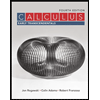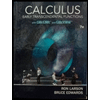
Concept explainers
Determine whether the given statement is true or false.
Answer to Problem 99E
The statement " √x+10−√x−10=0 has no solution" is true
Explanation of Solution
Given:
The equation:
√x+10−√x−10=0
Consider the following equation:
√x+10−√x−10=0
Check that the above equation has solution or not.
Isolate the radical first.
Add √x−10 to both sides of the equation √x+10−√x−10=0
√x+10−√x−10+√x−10=0+√x−10
Combine like terms to simplify the expression:
√x+10=√x−10
Further raise both sides to the power of the index which is 2.
Raise power 2 to both sides:
(√x+10)2=(√x−10)2
Simplify the expression:
x+10=x−10
Subtract x from both sides:
x+ 10–x=x–10–x
Combine like terms:
10=–10
Because 10=–10 is a false statement,
Therefore, the equation has no solution.
Hence the statement " √x+10−√x−10=0 has no solution" is true.
Chapter A Solutions
EBK PRECALCULUS W/LIMITS
- quick solve thisarrow_forwardquick solve thisarrow_forwardThis table displays the current in equal intervals. Time t/ms 05 10 15 20 25 30 Current i/A 0 4.8 9.1 12.7 8.8 3.5 0 The formula for the charge as follows: 30x10-3 q 0 i dt Use formula to solve the current at 30ms using both the trapezoidal rule and Simpson's rule showing all steps and workingarrow_forward
 Calculus: Early TranscendentalsCalculusISBN:9781285741550Author:James StewartPublisher:Cengage Learning
Calculus: Early TranscendentalsCalculusISBN:9781285741550Author:James StewartPublisher:Cengage Learning Thomas' Calculus (14th Edition)CalculusISBN:9780134438986Author:Joel R. Hass, Christopher E. Heil, Maurice D. WeirPublisher:PEARSON
Thomas' Calculus (14th Edition)CalculusISBN:9780134438986Author:Joel R. Hass, Christopher E. Heil, Maurice D. WeirPublisher:PEARSON Calculus: Early Transcendentals (3rd Edition)CalculusISBN:9780134763644Author:William L. Briggs, Lyle Cochran, Bernard Gillett, Eric SchulzPublisher:PEARSON
Calculus: Early Transcendentals (3rd Edition)CalculusISBN:9780134763644Author:William L. Briggs, Lyle Cochran, Bernard Gillett, Eric SchulzPublisher:PEARSON Calculus: Early TranscendentalsCalculusISBN:9781319050740Author:Jon Rogawski, Colin Adams, Robert FranzosaPublisher:W. H. Freeman
Calculus: Early TranscendentalsCalculusISBN:9781319050740Author:Jon Rogawski, Colin Adams, Robert FranzosaPublisher:W. H. Freeman
 Calculus: Early Transcendental FunctionsCalculusISBN:9781337552516Author:Ron Larson, Bruce H. EdwardsPublisher:Cengage Learning
Calculus: Early Transcendental FunctionsCalculusISBN:9781337552516Author:Ron Larson, Bruce H. EdwardsPublisher:Cengage Learning





